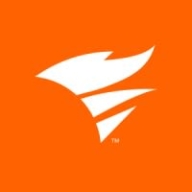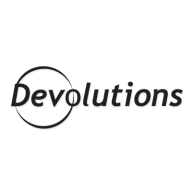


Dameware Remote Support and Devolutions Remote Desktop Manager compete in the remote support and management tools category. Users tend to prefer Devolutions for its advanced features and versatility, especially in complex environments, despite its higher cost.
Features: Dameware Remote Support provides straightforward functionality with minimal setup, designed for efficient remote support tasks. Devolutions Remote Desktop Manager includes extensive integration capabilities, session recording, and supports various remote connection types, which users appreciate for versatility and advanced tools.
Room for Improvement: Users suggest that Dameware Remote Support could benefit from enhanced reporting, improved user management, and additional customization options. For Devolutions Remote Desktop Manager, reviewers note a steep learning curve, interface complexity, and occasional performance issues as areas needing improvement.
Ease of Deployment and Customer Service: Dameware Remote Support is praised for its quick and easy deployment process and commendable customer support. Devolutions Remote Desktop Manager, while more complex to deploy due to its extensive feature set, is backed by responsive and effective customer service to help users overcome initial challenges.
Pricing and ROI: Dameware Remote Support is valued for its affordability and quick ROI, particularly in smaller setups. Devolutions Remote Desktop Manager, though higher in cost, provides significant ROI for those requiring a versatile and robust remote management tool.
| Product | Market Share (%) |
|---|---|
| Microsoft Intune | 9.6% |
| Devolutions Remote Desktop Manager | 1.3% |
| Dameware Remote Support | 1.0% |
| Other | 88.1% |


| Company Size | Count |
|---|---|
| Small Business | 116 |
| Midsize Enterprise | 46 |
| Large Enterprise | 152 |
| Company Size | Count |
|---|---|
| Small Business | 6 |
| Midsize Enterprise | 2 |
| Large Enterprise | 1 |
Microsoft Intune provides centralized management of mobile devices and applications, ensuring security, compliance, and productivity through integration with Microsoft services like Microsoft 365 and Azure Active Directory.
Organizations use Intune for managing mobile devices and applications, enhancing security and compliance across platforms. With features like single sign-on, conditional access, and zero-touch deployment via Autopilot, it facilitates efficient operations. Intune's scalability, easy enrollment, and capabilities such as remote wipe support diverse device management, offering robust data protection and efficient operation. Despite its features, improvement areas include reporting, compatibility with non-Microsoft devices, and better support for macOS and Linux devices.
What are the key features of Microsoft Intune?
What benefits should users look for in reviews?
In industries such as finance, healthcare, and education, Microsoft Intune is implemented to ensure secure and compliant device management. Companies leverage its capabilities to deploy security policies and manage both corporate-owned and BYOD environments, facilitating a unified approach to data protection and compliance.
Remote Desktop Manager (RDM) centralizes all remote connections on a single, secure platform that can be shared across the entire team. With support for hundreds of integrated technologies—including multiple protocols and VPNs—RDM provides a comprehensive solution for managing remote access. It also features enterprise-grade password management tools, detailed access controls, and mobile apps that complement its desktop clients for Windows and Mac, and Linux.
RDM is designed to empower IT departments by enhancing security, speed, and productivity across the organization. By streamlining remote access management, it helps reduce inefficiencies, lower costs, and minimize risks, making it an essential tool for today’s IT environments.
We monitor all Remote Access reviews to prevent fraudulent reviews and keep review quality high. We do not post reviews by company employees or direct competitors. We validate each review for authenticity via cross-reference with LinkedIn, and personal follow-up with the reviewer when necessary.